Nokia Lumia 710 Review - T-Mobile's Nokia WP7
by Brian Klug on January 5, 2012 12:01 AM EST- Posted in
- Smartphones
- Nokia
- Mobile
- WP7
- Lumia 710
Yesterday we took a look at the flagship of Nokia’s Lumia series - the Lumia 800. Today we’re looking at its younger and more entry-level sibling, the Lumia 710. Though the specs are lighter weight and the device isn’t a flagship, Nokia’s expectations for the device are no less high then they were for the Lumia 800, and there’s a lot riding on the 710.
Superficially, the Lumia 710 and 800 are very different. While the 800 is based on the N9’s design with a unibody polymer construction, the 710 is a more traditional device form factor with battery door and removable battery. In the size and weight department, the 710 is actually taller, thicker, and wider than the 800, though more than a half ounce lighter. No doubt some of this is to accommodate the removable battery and door, however it’s surprising how the 710 manages to be larger in almost every way.
The front of the Lumia 710 is one flat and continuous piece of Gorilla Glass. The Windows Phone buttons are of the physical sort, though they are really one continuous plastic button with three pressure sensitive areas that click in. I found using this continuous button somewhat disconcerting at first but easy enough to use after a day or so. The buttons are backlit like they should be, as well.
The only downside to this arrangement is that because the buttons jut out so much, they become the surface that ends up coplanar with a table or desk when the phone is placed face down. As a result, they do pick up scratches if you aren’t careful.
Just below this is a small gap where the primary microphone is located, and at the very top are the usual culprits (earpiece, proximity sensor and ambient light sensor). I don’t believe the glass display has an oleophobic coating either. There’s a small gap in-between the glass edge and plastic around it where dust can gather as well, but it isn’t a hugely big deal.
The Lumia 710 is ringed with a glossy plastic lip that thankfully isn’t chrome but still shows ample fingerprints. At the top and bottom, this lip gets thicker, whereas on the sides it serves primarily for the battery door to snap into. The battery door is a relatively typical black matte soft touch material (I should note that there are multiple body + battery door color combinations of Lumia 710 that will arrive) which doesn’t show fingerprints, thankfully.
The battery door clips onto the right side (where the buttons are) and snaps into place on the left. Nokia thoughtfully also lines the inside region with foam to minimize flex between the door and battery, and also seal out dust that always manages to get inside on other devices. You can also tell that Nokia has been at this for a long while, since there’s no unnecessary extra piece of transparent plastic between the camera module and the battery door.
Nokia’s removable battery is on the smaller side for phones lately at just 4.81 Whr. We’ll talk more about battery performance in the next section, however. The battery compartment is also where the Lumia 710’s microSIM port is, which slides in face down and is held in place by an installed battery. There’s a window at the top where you can get a fingernail inside and push the SIM out. With the backside off, you can also pick out the 710’s cellular antenna (at the bottom) and WLAN/BT antenna (top left) which are pretty standard fare.
On the backside is the 5 MP camera and single LED flash, and just below the flash is the port for the 710’s second microphone. At the very bottom is the speakerphone grille, though only the thin notch in the bottom right actually goes through to the backside.
Next are the buttons - the Lumia 710 places the standby/power button at the very top right, and and the volume rocker and camera buttons in their usual places on the right side. My only complaint is with the camera button. The button is two-step, yet the first detent (for focus and exposure) is impossible to feel on our 710 review unit. Only the second stage which captures is clicky enough to actually be felt.
Just like the Lumia 800, the 710 features a microUSB port and headset jack on the very top. At the very bottom is a cell phone charm/hand strap port.
| Physical Comparison | ||||||
| HTC Sensation | Samsung Focus S | Nokia Lumia 800 | Nokia Lumia 710 | |||
| Height | 126.3 mm (4.97") | 126.1 mm (4.96") | 116.5 mm (4.59") | 119.0 mm (4.69") | ||
| Width | 65.5 mm (2.58") | 66.8 mm (2.63") | 61.2 mm (2.41") | 62.4 mm (2.46") | ||
| Depth | 11.6 mm (0.46") | 8.5 mm (0.33") | 12.1 mm (0.48") | 12.5 mm (0.49") | ||
| Weight | 148 g (5.22 oz) | 125 g (3.9 oz) | 142 g (5.0 oz) | 125.5 g (4.4 oz) | ||
| CPU | 1.2 GHz Dual Core Snapdragon MSM8260 | 1.4 GHz Single Core Snapdragon MSM8255 | 1.4 GHz Single Core Snapdragon MSM8255 | 1.4 GHz Single Core Snapdragon MSM8255 | ||
| GPU | Adreno 220 | Adreno 205 | Adreno 205 | Adreno 205 | ||
| RAM | 768 MB LPDDR2 | 512 MB LPDDR2 | 512 MB LPDDR2 | 512 MB LPDDR2 | ||
| NAND | 4 GB NAND with 8 GB microSD Class 4 preinstalled | 16 GB NAND (no external microSD) | 16 GB NAND (no external microSD) | 8 GB NAND (no external microSD) | ||
| Camera | 8 MP AF/Dual LED flash, VGA front facing | 8 MP AF/LED, 1.3 MP front facing | 8 MP AF/Dual LED Flash, 720p Video Rec. | 5 MP AF/LED Flash, 720p Video Rec. | ||
| Screen | 4.3" 960 x 540 S-LCD | 4.3" 800 x 480 SAMOLED+ | 3.7" 800 x 480 SAMOLED w/ClearBlack | 3.7" 800 x480 TFT LCD w/ClearBlack | ||
| Battery | Removable 5.62 Whr | Removable 6.1 Whr | Internal 5.37 Whr | Removable 4.81 Whr | ||
Internally, the Lumia 710 is nearly the same beast as the Lumia 800. At their core, both are based on a 1.4 GHz Qualcomm single core Snapdragon MSM8255, both have 512 MB of LPDDR2 RAM, and share most of the surrounding chipset. The Lumia 710 also includes 8 GB of NAND of which 6.28 GiB are available to the OS for storage of photos, pictures, music, and videos. Again, the 710 is positioned as more of an entry level device, so we don’t see some of the same expensive extras that really add up.
It’s important to keep some context for the Lumia 710, which in the USA is headed to T-Mobile USA. On T-Mobile USA, the only other current Windows Phone it must compete against is the HTC Radar 4G, which carries similar specifications - 8 GB of NAND, 3.8” WVGA LCD, 5 MP camera, and another MSM8255 but at 1.0 GHz. The Lumia 710 will go on sale on Jan. 11 for $49.99 after a $50 mail-in rebate card on two year contract, which definitely shows how Nokia and T-Mobile intend to position the 710 as a mainstream WP7 platform.
I really have to emphasize that although the super high end devices wind up getting most of the attention and really drive the enthusiast perception of a platform, it’s the mainstream and middle tiers where Android (and now hopefully Windows Phone 7) will make major inroads. That’s something I have to occasionally remind myself about as well; although we have a major tendency to only do deep dives on the absolute bleeding edge hardware, it’s the mid tiers where the platform battles are won and lost.
By most measures, the 710 is a great entry-level device. Its in-hand feel doesn’t feel cheap or flimsy, and at $50 on contract feels a lot better than some of the first generation entry level Android phones I’ve handled but never formally reviewed. The only downside is that the 710 still strikes me as being larger than it really needs to be - there’s no huge battery that it needs to accommodate, nor an absurdly huge display, and yet it still manages to be bigger than the much more fully featured Lumia 800.


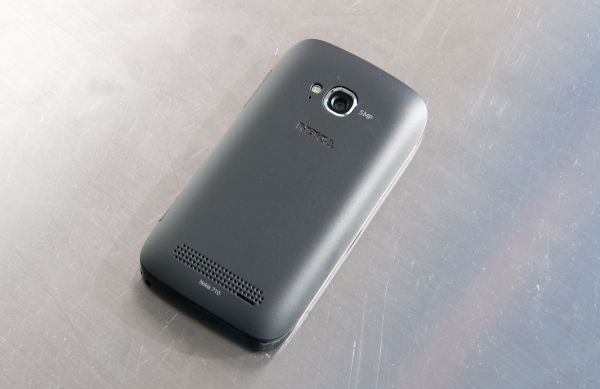
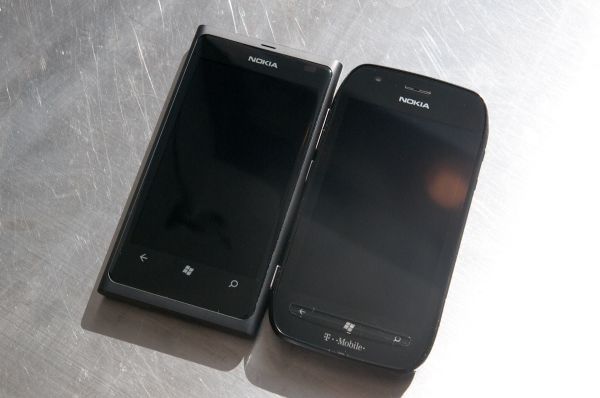
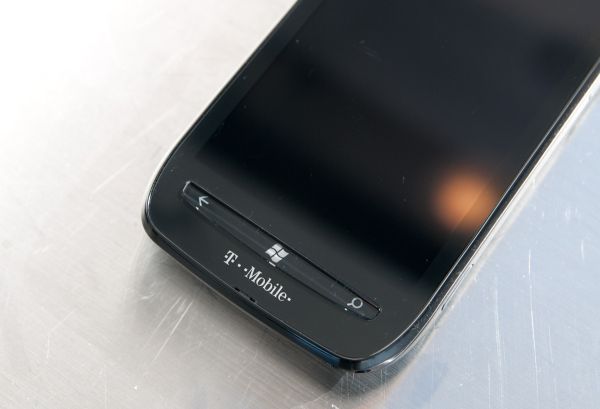
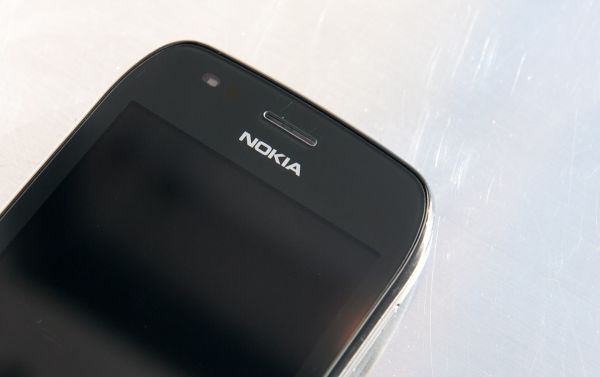
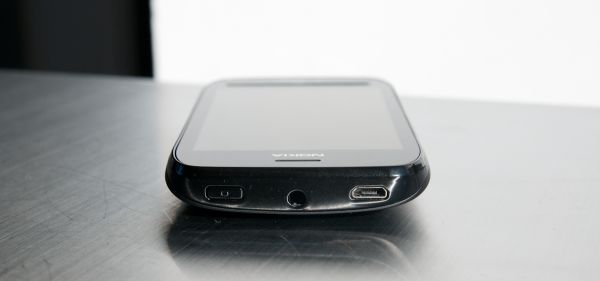
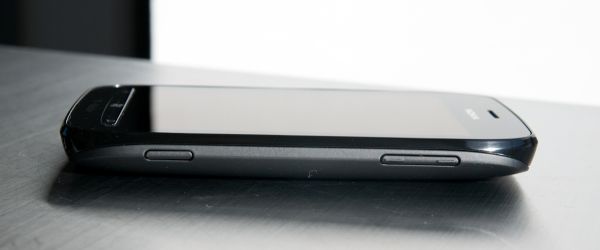
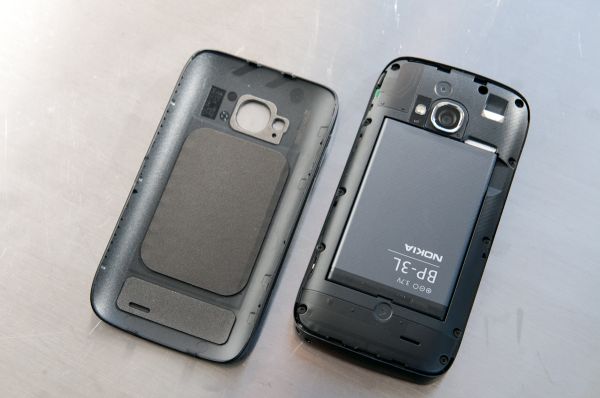
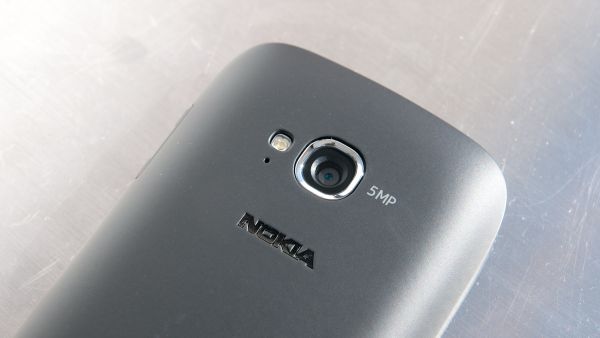









48 Comments
View All Comments
KTGiang - Thursday, January 5, 2012 - link
HTC Arrive on Sprint. I use one. Or also known as the HTC HD7 Pro in the rest of the world I believe.Spivonious - Thursday, January 5, 2012 - link
LG Quantum has one.3lackdeath - Friday, January 6, 2012 - link
The LG C900 also has a physical keyboard.RollingCamel - Thursday, January 5, 2012 - link
In a previous review you had a Mi-One on your benchmarks and , iiirc, you said that you'll post a review of it soon.kavanoz - Thursday, January 5, 2012 - link
I live in a European country where the carriers are not subsidizing cell phones. Monthly data+voice cost over a period of time is lower compared to a smartphone price so it makes sense to choose between a cheap and expensive phone. There is no 2 year commitment so you should decide if you want to buy a cheap phone and replace it sooner or an expensive one for longer term.In the US the price over a 2 year contract (with a data plan) is substantial compared to the subsidized smartphone price. Usually high end phones sell for $200 and the cheapest ones are $50 or less. I don't think $150-$200 is much enough compared to the overall cost over 2 years (less than $10/mo) so I would only buy the high end smartphones. Carriers should introduce discounted monthly data+voice plans for cheaper smartphones.
DanNeely - Thursday, January 5, 2012 - link
The same long term myopia that results in Joe Luser prefering to end up paying more for his phone in higher monthly rates if he doesn't upgrade it every 24 mo on the spot makes paying anything upfront for the phone unattractive. The cash cow of people not upgrading immediately is also why excepting T-Mobile none of the major US carriers offer discounts once your longterm contract is expired and you're no longer paying down a device subsidy.shompa - Thursday, January 5, 2012 - link
" Microsoft has a great hardware partner in Nokia (arguably one of the best in the business)"Nokia does not built these windows phones. Their insane CEO have outsourced it to South Korean companies (probably HTC). At the same time Nokia's own factories are empty. Nokia's strength were that they could build phones cheaper then anybody else. Now they are locked to a predetermined platform by MSFT and outsource the manufacturing. Since they don't even do the OS, what exactly does Nokia do on their phones today?
BTW. From my knowledge Windows mobile 7.5 is not multi threaded. That is the reason why we only have single core processors. The whole windows platform is played by non/poor multithreading since Windows inception. Google/Apple use *nix. Something that have been multithreaded since late 1960s.
The fact is that MSFT never have been successful in any business there they have had competition. Still today 94% of MSFT profit comes from Windows/Office. Its only in monopoly business that people accept poor products and insane prices. Somehow Office costs 300 dollars on Windows, while MSFT Office for mac can be bought for 30 dollar. The difference is that MSFT have competition on mac. Even at 30 dollars people don't buy it.
Only way for MSFT to make Windows Mobile successful is that they do like they did with Xbox. MSFT have to eat huge losses for almost 10 years. MSFT have already started this strategy by giving free Xbox360 consoles to people who buys Lumia phones and spending hundreds of millions of dollars on advertising.
I have worked for Nokia. They have a special place in my heart. They will not survive with this insane CEO they have. He needs to be fired as soon as possible and Nokia needs to make good Android phones. MSFT mobile won't be successful.
a5cent - Thursday, January 5, 2012 - link
It sounds like you have personal grievances with Elop, and you're allowing that to cloud your objectivity. Most of your post is ill informed blathering...1)
Yes, the Lumia 800 is manufactured by Compal, based in Taipei City (not HTC). However, I can't understand that this surprises you. Consumer electronics aren't manufactured anywhere outside of Asia these days. Nokia themselves have factories all over the world, including China, and Vietnam. Anyhow, welcome back to planet earth.
2)
It is not called Windows Mobile. It is called Windows Phone. These are two completely different product lines with no relationship to each other, other than both of them being mobile device operating systems.
3)
Windows Phone is multi-threaded and always has been. The OS itself is heavily multi-threaded. Windows Phone 7.5 is based on Windows CE 6.5 R3 (real-time OS optimized for low resource environments), which doesn't support multiple CPU cores, which isn't the same thing.
4)
If MS had never competed successfully against others, they wouldn't exist today. Go ask IBM.
The rest of your post is either speculation or similarly ridiculously. If you have no idea what you are talking about, then it might be better to remain quiet and not make a fool of yourself.
Penti - Friday, January 6, 2012 - link
While I might not agree with his gripes, Nokia is different from all other handset manufacturers / brands since they own and operate major manufacturing facilities employing tens of thousands themselves. Thus if they choose to continue to outsource the product it effectively means the end of Nokia altogether. It's simply not relating or having anything to do with todays company if all they will do is use a couple of thousand engineers and a couple of thousands sales and support-people and outsource the production of the few million Windows Phone units they will be able to sell.Microsoft-thinking has destroyed or set back many companies, it is not some new hate. We are talking about effectively killing and downsizing a company before turning any losses. We are talking about killing the only mobile OS developed outside North America. We are talking about closing production sites. We are talking about a mindset which goes against any European or really any engineering company. Downsizing, and not having long term plans doesn't go well together with engineering. Companies need some direction. Other Scandinavian companies has had similar problems with North Americans or others coming in and simply not giving the tools to do the job. Simply changing to that direction and expecting the company to live on even older S40 tech is wrong for Nokia. We will see when the Finns name Elop the worst person in history. How Microsoft runs their business doesn't translate to all other companies of the world and when ex-Microsoft people believes that there is usually disastrous consequences. It's clearly some kind of coup in some sense and a dramatic change and a decisions not made for the companies welfare. They already had an environment built on Qt/QtMobility on either Symbian or MeeGo which is every bit as powerful as Windows Phone if not more. It's API-complete and a competent C++ framework. Fits better in terms of hardware and software. The core of Nokia shouldn't be trying to sell S40 in smartphone space. But it is turning to that until they realize it isn't possible any how. Nokia will be left as a company that is not good at anything if they go through with it in the direction they seem to have chosen. It will not be an engineering and manufacturing company any way, and what good will a much smaller reminiscence do to their owner? It's truly a much more dramatic shift then say the finish government which approved it would have expected any how. It's not really about Windows Phone being useless it certainly isn't, but Nokia needs to sell hundreds of millions of phones. They will certianly need something others hasn't and target wider array of the market and different markets (countries).
Android and outsourcing to Android ODM's will lead to the same depletion. Companies need some core competence otherwise they are just selling someone else's product and that doesn't really work that well most disappear in those conditions and the brands consolidate and merge and the market converge. It's why Kindle Fire has more sales then every other android-tablet combined, they bring something of their own to the table. Simply bringing a nameless OEM-product doesn't do much. Many try. It's nothing new that companies give up but most do after major changes to their operations and years of losses.
a5cent - Friday, January 6, 2012 - link
I understand your point (American and European business culture differs and the two are rarely compatible... although they aren't totally incompatible either). I can agree with that.I also agree that it isn't a good move for Nokia to outsource production to Compal. But do we know for a fact, that this is intended as a long term solution? I expect that Nokia will move that back in-house again at some point... right now I suspect they aren't selling enough WP devices to make that worthwhile.
Apart from those two things I rather tend to disagree:
1)
Samsung has become Asia's most valuable company selling other peoples products (Android devices). Nokia has the same potential.
2)
Symbian has been failing for a long time. Long before anyone even knew Elop. Nokia never competed in the high-end smartphone space, and their low-end offerings are taking a brutal beating from cheap Android devices. This is what set the stage for Nokia's current situation. Elop is just the guy that was chosen to clean up the mess.
3)
Making good software and high-end Smartphones was never one of Nokia's/Symbian's core competencies, or at least the worlds markets never thought so. Their engineers are very competent, but they were not developing the right things. MeeGo is also in that category. Neither MeeGo nor WP have a killer-feature (the average Joe couldn't care less who has the best Multitasking). However, WP has the much higher potential to develop such a killer-feature (very tight integration between W8 and WP8 for example)
I am also a European and would have preferred OS development to stay in Europe. Yet I agree with Elop's decision. I think he is taking a very big risk, but that is still better than staying with MeeGo where I see no route to success at all, and would have lead to Nokia as a whole becoming irrelevant.
Anyway, all the mistakes leading to this inflection point were made long ago. Now Nokia has no choice but to accept drastic change, and that always hurts.